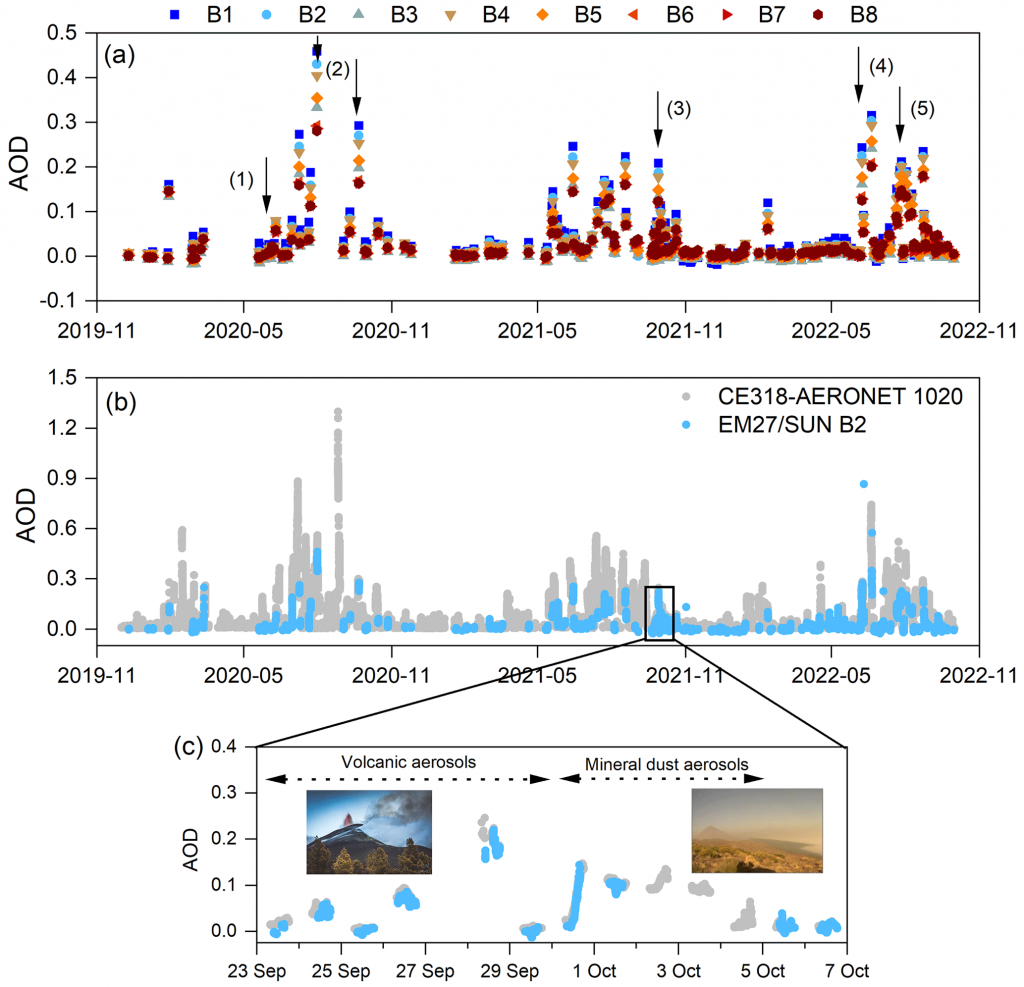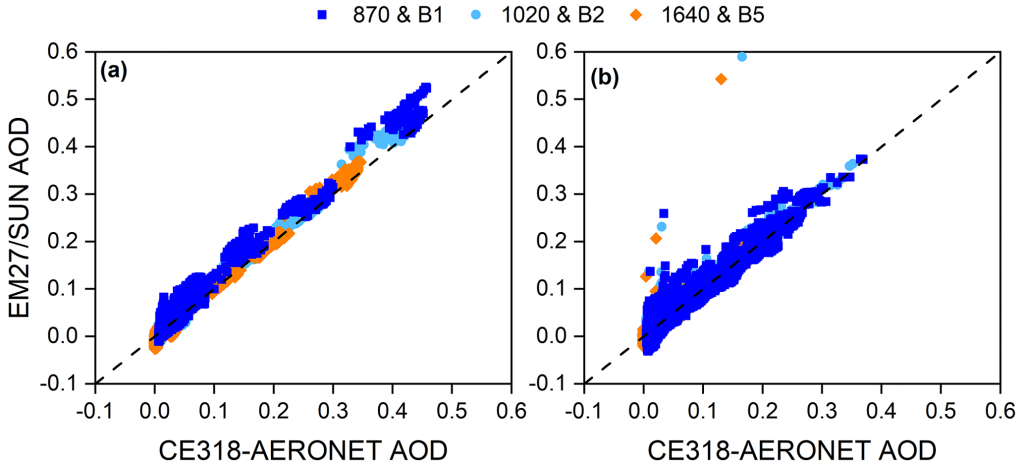Aerosol properties derived from COCCON ground-based Fourier Transform spectra
Fourier transform infrared (FTIR) spectroscopy is particularly relevant for climate studies due to its ability to provide information on both fine absorption structures (i.e. trace gases) and broadband continuum signatures (i.e. aerosols or water continuum) across the entire infrared (IR) domain. In this context, this study assesses the capability of the portable and compact EM27/SUN spectrometer, used within the research infrastructure COCCON (COllaborative Carbon Column Observing Network), to retrieve spectral aerosol properties from low-resolution FTIR solar absorption spectra (0.5 cm−1).
The study focuses on the retrieval of aerosol optical depth (AOD) and its spectral dependence in the 873–2314 nm spectral range from COCCON measurements at the subtropical high-mountain Izaña Observatory (IZO, Tenerife, Spain), which were coincidentally carried out with standard sun photometry within the AERONET (Aerosol Robotic Network) in the 3-year period from December 2019 to September 2022 (Figure 1).

Figure 1.- Time series, from December 2019 to September 2022, of (a) the daily mean AOD data for the eight EM27/SUN spectral bands and (b) the CE318-AERONET and EM27/SUN AOD values measured at the coincident B2 and 1020 nm band. (c) AOD evolution over a 14 d period in September 2021. The images in panel (c) correspond to the volcano on La Palma (LuzLux/AEMET) and a Saharan dust event at the IZO. The black arrows in panel (a) mark important AOD events: (1) spring/summer 2020, (2) mineral dust outbreaks in July and September 2020, (3) La Palma volcanic eruption between September and December 2021, (4) mineral dust outbreak in June 2022, and (5) forest fire in July 2022.
The co-located AERONET–COCCON database was used to cross-validate these two independent techniques in the common spectral range (870–1640 nm), demonstrating an excellent agreement at the near-coincident spectral bands (mean AOD differences limited to 0.005, standard deviations up to 0.021 and Pearson regression coefficients up to 0.97) (Figure 2).

Figure 2.- Scatterplot for the coincident EM27/SUN versus CE318-AERONET AOD values from (a) December 2019 to December 2020 and (b) January 2021 to September 2022 considering the EM27/SUN B1 (870 nm), B2 (1020 nm) and B5 (1640 nm) micro-windows. The number of coincidences is 14 575 and 2863 in the periods of January 2021–September 2022 and December 2019–December 2020, respectively.
These results indicate that the low-resolution COCCON instruments are suitable for detecting the aerosol broadband signal contained in the IR spectra in addition to the retrieval of precise trace gas concentrations, provided a robust calibration procedure (Langley-based or absolute calibration procedures) is used to compensate for the optical degradation of the external system (∼ 0.72 % per month). The study also assesses the capability of the EM27/SUN to simultaneously infer aerosols and trace gases and relate their common emission sources in two case study events: a volcanic plume from the La Palma eruption in 2021 and a nearby forest fire in Tenerife in 2022. Overall, our results demonstrate the potential of the portable low-resolution COCCON instruments to enhance the multi-parameter capability of the FTIR technique for atmospheric monitoring.
Publications:
- Alvárez, Ó., Barreto, Á., García, O. E., Hase, F., García, R. D., Gröbner, J., León-Luis, S. F., Sepúlveda, E., Carreño, V., Alcántara, A., Ramos, R., Almansa, A. F., Kazadzis, S., Taquet, N., Toledano, C., and Cuevas, E.: Aerosol properties derived from ground-based Fourier transform spectra within the COllaborative Carbon Column Observing Network , Atmos. Meas. Tech., 16, 4861–4884, 2023.
